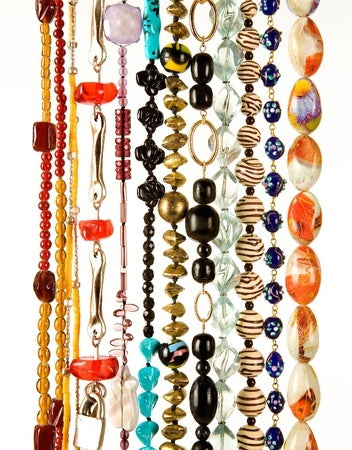The History of Beads in Beaded Jewelry
It is amazing how far back in time that beads of all sizes, shapes, colors, and materials have been the desired collectible and how they have been used not only for personal adornment and jewelry but also as “money” to use in trading for goods and services, as good luck talismans, for religious ceremonies, and in a large variety of spectacular crafts.
Beadwork is the technique that attaches beads to one another by stringing them with a needle onto thread or thin wire or by knitting, crocheting, weaving or sewing them onto a cloth.

Ancient beading is thought to have begun in Mesopotamia and was imported to Egypt where they made it into their own art form. From Narmer’s first dynasty back in 3100 B.C. and up to the present time, Faience beads have been made using the same method of a mixture of powdered clays, silica sand, soda, and lime mixed with a little water that makes a paste. That is molded around a piece of straw or a small stick, fired, and it melts into the glass that covers the clay, resulting in a hard bead that is covered in bluish glass.
Native American beadwork actually uses beads that are imported from Asia and Europe, and the Americas have used glass beads for about five centuries. Tribes are well-known for their beautiful artwork used in all types of uses from dance regalia to buckskin, sculptures, portraits, horse trappings, and even dog blankets!
European beadwork dates back to when animal bones and shells were used as “beads”. The 16th century found the French making beaded flowers, and the still-popular-today lampwork glass was invented back in the 18th century.
Modern beadwork as a creative hobby can range from simple projects that can be created in less than an hour to complex beadwork that could take weeks of meticulous work and require the use of specialized equipment and tools.
For more details about beaded jewelry, please visit our website or contact us.
Photo Credits:
-
Copyright: / 123RF Stock Photo
-
Copyright / 123RF Stock Photo

